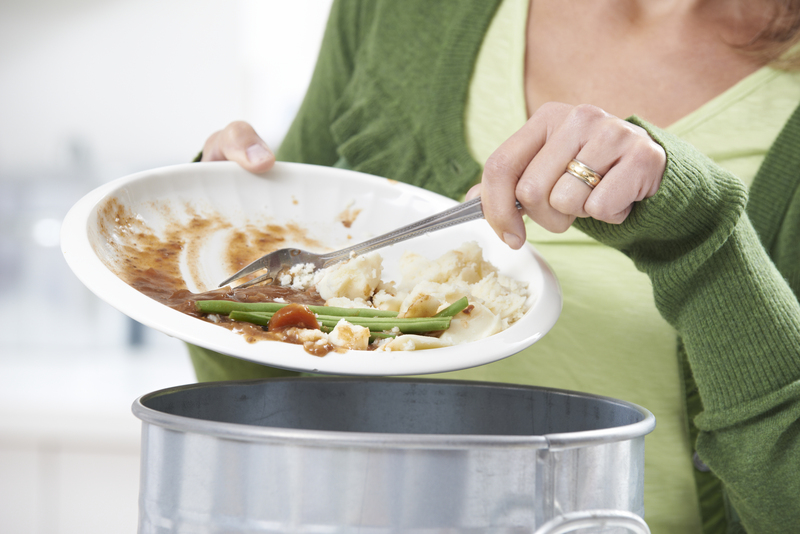Minimize Microplastics in Laundry
Posted on 03/07/2025
Minimize Microplastics in Laundry: An Essential Guide for Sustainable Living
Microplastics are an emerging environmental concern, infiltrating ecosystems and causing harm to marine life and human health. These tiny plastic particles, often smaller than 5 millimeters, originate from various sources--one of the most significant being household laundry. Synthetic fabrics like polyester and nylon shed microplastics during washing, which then escape into waterways. This article explores how to minimize microplastics in laundry and offers practical solutions for a greener lifestyle.
Understanding the Problem: Microplastics and Their Impact
Microplastics are pervasive pollutants found in oceans, rivers, and even tap and bottled water. Their sources are manifold, including plastic waste, industrial processes, and, alarmingly, household laundry. Synthetic fibers, when washed, release tiny plastic fragments that wastewater treatment plants cannot entirely remove. These microplastics bypass filtration systems and make their way into natural water bodies, causing numerous ecological and health-related issues.
Marine animals mistake these particles for food, leading to ingestion and accumulation in the food chain, which can ultimately impact human health. Research has linked microplastics to physical and chemical injuries in marine organisms and potential hormonal disruptions in humans. Addressing the issue of microplastics in laundry is crucial for protecting our environment and health.

Simple Steps to Minimize Microplastics in Laundry
Reducing microplastic pollution from laundry requires a multi-faceted approach. Here are some practical steps you can take:
1. Choose Natural Fibers
One of the most effective ways to reduce microplastic pollution is to choose clothing made from natural fibers like cotton, wool, or hemp. These materials do not shed microplastics when washed, making them a sustainable alternative to synthetic fabrics. Investing in high-quality, durable garments can also decrease the frequency of replacements, reducing overall environmental impact.
2. Use a Microfiber Filter or Bag
Several products on the market are designed to capture microplastics during laundry cycles. Microfiber filters can be installed in washing machines to trap synthetic fibers. Alternatively, microfiber-catching laundry bags, such as the Guppyfriend, can be used to contain synthetic clothing during washes, preventing microplastics from escaping into wastewater.
3. Wash Less Frequently
Washing clothes less often can significantly reduce the release of microplastics. Many garments, especially outerwear, can be worn multiple times before needing a wash. Spot cleaning and airing out clothes can extend the time between washes. This practice not only saves water and energy but also preserves the integrity of fabrics, reducing wear and tear.
4. Use Cold Water and Gentle Cycles
Washing clothes in cold water and on gentle cycles can minimize the breaking down of fibers, thereby reducing the release of microplastics. Hot water and aggressive washing cycles can cause synthetic fibers to shed more readily. Switching to more delicate settings can help preserve the longevity of your clothes and protect the environment.
5. Use a Front-Loading Washing Machine
Front-loading washing machines are generally gentler on clothes compared to top-loading machines. They use less water and have more efficient cleaning cycles, which can reduce the friction that causes fibers to break. Investing in a high-efficiency front-loading machine can be a long-term strategy for minimizing microplastic pollution.
Innovative Solutions and Future Prospects
1. Advances in Fabric Technology
Researchers and manufacturers are exploring innovative fabrics designed to reduce microplastic shedding. These advancements include developing coatings and treatments for synthetic fibers that minimize fragmentation. Such innovations could revolutionize the textile industry, offering eco-friendly alternatives without sacrificing performance or durability.
2. Improved Wastewater Treatment
Upgrading wastewater treatment plants to efficiently capture microplastics is a critical step in addressing this issue. Enhanced filtration systems and advanced technologies, such as membrane bioreactors and specialized filters, can improve the removal of microplastics from wastewater, preventing them from entering natural water bodies.
3. Policy and Regulation
Governments and regulatory bodies play a pivotal role in mitigating microplastic pollution. Implementing policies that mandate the use of microfiber filters in washing machines and setting standards for textile manufacturing can drive significant change. Advocacy and awareness campaigns can also encourage consumers to adopt sustainable laundry practices.

Practical Tips for Everyday Life
1. Support Sustainable Brands
Choosing clothing from brands that prioritize sustainability and ethical manufacturing practices can make a difference. Many companies are committed to reducing their environmental footprint by using natural fibers, recycled materials, and eco-friendly production methods. Supporting these brands encourages the industry to adopt more responsible practices.
2. Educate and Advocate
Raising awareness about the impact of microplastics is crucial for driving collective action. Share information with friends, family, and your community about the importance of minimizing microplastics in laundry. Advocacy can also extend to contacting local representatives and supporting policies aimed at reducing plastic pollution.
3. DIY Solutions
For those on a budget, DIY solutions can be effective. Creating your own microfiber-catching laundry bag using tightly woven fabric can help reduce microplastic release. Additionally, homemade laundry detergents that are free from harsh chemicals can be gentler on fabrics, extending their lifespan and reducing fiber breakdown.
Conclusion: Taking Action for a Cleaner Future
Minimizing microplastics in laundry is a critical step toward reducing environmental pollution and protecting both marine life and human health. By adopting sustainable practices, supporting innovative solutions, and advocating for regulatory changes, we can collectively address this pressing issue. Small changes in our daily routines, such as choosing natural fibers, using microfiber filters, and washing clothes less frequently, can have a significant impact.
The journey toward a microplastic-free future requires collaboration and commitment from individuals, industries, and governments. By making informed choices and encouraging others to do the same, we contribute to a cleaner, healthier planet for future generations.
Incorporate these practices into your daily life and witness the positive impact on both your wardrobe and the environment. Together, we can make a difference in minimizing microplastics in laundry and fostering sustainable living.

